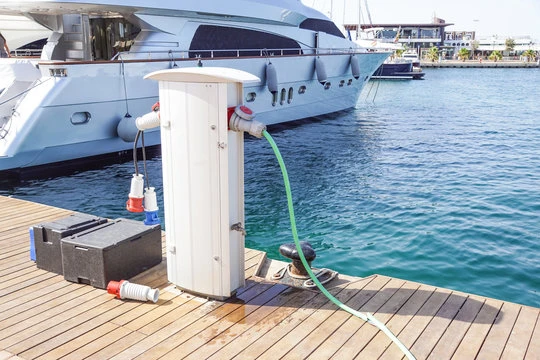With the global push toward carbon neutrality and the rapid development of clean energy technologies, electric boat power systems are quickly becoming the preferred solution in the marine industry. From sightseeing boats and inner-city ferries to private yachts and fishing boats, more users are switching from traditional diesel engines to electric propulsion systems for a cleaner, quieter, and more cost-effective ride.
In this guide, we’ll walk you through everything you need to know about electric boat power systems—how they work, where they’re used, what to look for, and common FAQs—so you can confidently choose the best system for your needs.
What Is an Electric Boat Power System?
An electric boat power system is a complete propulsion solution powered by batteries instead of fuel. It typically includes:
- Lithium battery packs (LiFePO4 preferred) – to store and supply stable power.
- Marine motor & controller – to convert electrical energy into motion.
- Battery Management System (BMS) – to monitor temperature, voltage, current, and safety.
- Smart communication module – for CAN, RS485, WiFi, or Bluetooth connectivity.
This integrated setup powers various types of electric boats—from small tenders to high-performance hydrofoils.

Why Choose an Electric Power System?
| Benefits | Description |
|---|---|
| Eco-friendly | Zero emissions—perfect for lakes, nature reserves, and parks. |
| Ultra-quiet | Silent operation offers a peaceful boating experience. |
| Low Maintenance | No oil changes, no exhaust systems, fewer moving parts. |
| Instant Torque | Electric motors respond quickly for smooth acceleration. |
| Smart Control | Optional remote monitoring and app-based management. |
Common Applications & System Recommendations
| Application Type | Recommended System Configuration |
| Sightseeing Boat | 48V / 5–10kW motor + 200–300Ah LiFePO4 battery + IP65 controller |
| Fishing Boat | 72V / 10–15kW system + high-capacity BMS + extended runtime battery |
| Private Yacht | 96V / 20–30kW motor + fast-charging lithium battery + smart display |
| Hydrofoil Speedboat | 144V / high-speed motor + precision vector controller + waterjet drive |
How to Choose the Right Power System
Choosing the right electric boat propulsion system depends on several key factors:
Voltage & Power Output
Small boats typically use 48V or 72V, while larger vessels need 96V or even 144V for efficiency and reduced heat.
Battery Capacity & Runtime
A 200Ah battery can support 2–4 hours of cruising. Go bigger for longer trips or commercial use.
Battery Safety & Lifespan
Opt for A-grade LiFePO4 batteries with 3000–6000 cycle life. They're safer and last longer than lead-acid.
Ingress Protection (IP Rating)
Ensure motor and controller components are rated IP54 or higher (IP65+ recommended for marine environments).
Communication & Monitoring
Does the system support CAN or RS485 protocols? Is there a mobile app or cloud platform for remote diagnostics?
Compliance & Certification
Look for CE, RoHS, UN38.3, and MSDS to meet safety and export requirements.
Why Choose Us?
As a dedicated supplier of electric marine power systems, we offer:
- Full system integration – motors, batteries, controllers, and installation support included.
- Modular design – flexible for all types of boats and voltage platforms.
- Technical customization – including communication protocols and remote diagnostics.
- In-house stock & fast delivery – standard models available, OEM/ODM supported.
- Real-world experience – proven use cases across tourism, fishing, government, and private fleets.
Frequently Asked Questions (FAQ)
How long can an electric boat run on a full charge?
It depends on battery size and cruising speed. A 10kWh system typically offers 2–3 hours of operation. With 300Ah+ capacity, it can last up to 5 hours or more.
Can I retrofit an old diesel boat with electric power?
Yes! We offer custom retrofit solutions. However, it’s important to evaluate hull space, propeller type, and weight distribution.
Do you support solar charging?
Absolutely. Our systems can integrate with solar charging controllers, though we recommend solar as a supplementary source rather than primary power.
What’s the battery lifespan?
LiFePO4 batteries last for 3000 to 6000 charge cycles, typically 8 to 12 years with regular use.
Is remote monitoring available?
Yes, selected models offer Bluetooth or WiFi modules and mobile app access for real-time monitoring and alerts.
Ready to Go Electric?
Whether you're upgrading a fleet or launching a new eco-friendly boat model, our team is ready to help you build a powerful, safe, and intelligent electric propulsion solution.
Email: sales@cicbattery.com
Website: www.ciclibattery.com

